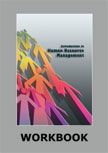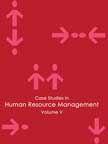IKEA's Innovative Human Resource Management Practices and Work Culture |
ICMR HOME | Case Studies Collection Please note: This case study was compiled from published sources, and is intended to be used as a basis for class discussion. It is not intended to illustrate either effective or ineffective handling of a management situation. Nor is it a primary information source. |
||||
ExcerptsHuman Resource Management Practices
This did not always work well, as different employees had different needs. In the late 1990s, when Spiers-Lopez became the HR head at IKEA North America, she realized that employees were not able to derive the maximum benefit from IKEA's generous HR policies, as the policies did not always match individual needs and requirements. She felt that employees would benefit more if there were a greater amount of flexibility in benefits administration... Work CultureIKEA's positive HR policies were supported by a strong and nurturing culture that promoted diversity and creativity. Spiers-Lopez said IKEA's culture was characterized by a family-like quality that made relationships between employees strong and open.
The PayoffNo doubt IKEA's generous policies involved substantial costs for the company (sometimes they seemed to be the antithesis of the company's cost conscious culture), but the pay off far outweighed the costs. For one thing, IKEA's employee turnover fell drastically, from 76 percent in 2001, to 56 percent in 2002 and 35 percent in 2003. The company's turnover was also almost half the average industry rate, which hovered around 60 percent. This substantially lowered the company's costs in recruiting and training replacements... Exhibits
Exhibit I: IKEA's Ownership Structure |
Case Studies Links:-
Case Studies,
Short Case Studies,
Simplified Case Studies.
Other Case Studies:-
Multimedia Case Studies,
Cases in Other Languages.
Business Reports Link:-
Business Reports.
Books:-
Textbooks,
Workbooks,
Case Study Volumes.



